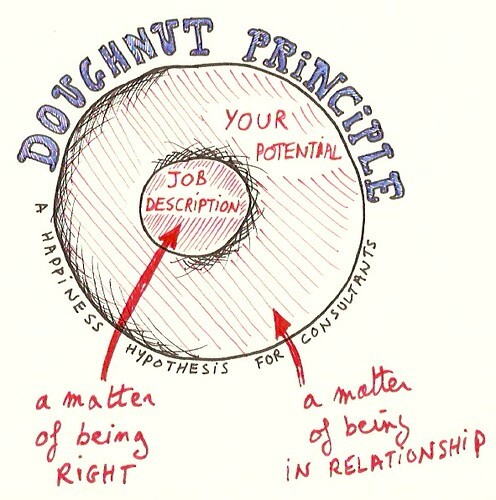Building further on the Growing into a Customer logic I posted last week, there is some clear-cut career advice in the Doughnut Principle of Charles Handy. As it turns out, comparing your career / your work with a doughnut makes it pretty easy to evaluate.
1. The Doughnut Principle
In his 1994 book The Empty Raincoat, Charles Handy introduces the doughnut principle.
Handy compares the work we do to a doughnut and says the core is what is essential. It is the agreed given of a job, or a project: the job description. And the outside of the core is our potential. The potential is variable and you can develop as much or as little of it as you want.
2. Statistical Career Advice
Handy says that evaluating your doughnut follows the logic of Type I and Type II errors.
Evaluating the core of your doughnut (i.e.: the contractual, the tangible, the measurable) comes down to asking the question: “What did you do wrong compared to the expectations?” Statisticians would call this an error of the first kind, or a false positive.
Evaluating the outside of your doughnut requires a different kind of thinking that is more related to the question: “What did you not do with your potential?” In statistical language this would be an error of the second kind or a false negative.
3. What’s the Point?
The point is that you can run your life on automatic pilot, sticking to the core, by keeping a detailed record of your type I successes (fitting in according to the specifications). Or you can balance this core with some challenge to develop yourself and discover your type II potential (standing out according to your potential).
- How would you walk, how would you talk in each case?
- How would you hire?
- How would you evaluate performance?
- How would you develop people?
- How would you lead a team?




